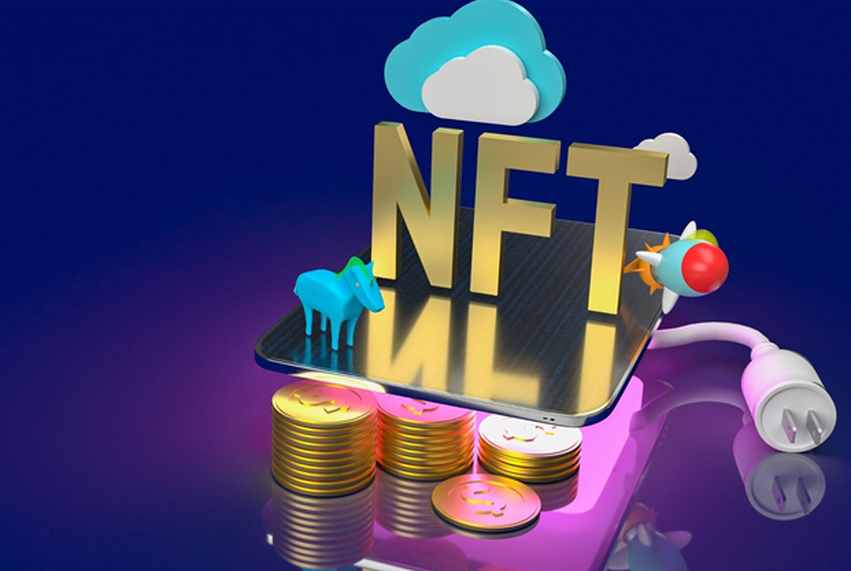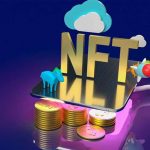The Rise of NFT’s and Play-to-Earn Gaming

Gaming has become one of the world’s favorite activities. What was once solely an entertainment option has now moved to the mainstream, and has evolved continuously. While many people are playing free, online Solitaire, far more demand the highest degree of technology and realism in gaming environments.
Over the past few years, a new trend has emerged: Gaming as a primary source of income. Fueled by the lockdowns during the COVID pandemic, games promising users steady incomes have risen in popularity. Dubbed play-to-earn, these games currently exist on the blockchain and show no signs of slowing down.
The top two play-to-earn games Alienworlds and Axie Infinity boast a combined user count of close to 2 million people. Here’s a brief chronicle on the spectacular rise of the gaming world’s latest trend.
Earning real money
Games have always sought to reward their users. Whether it’s in-game rewards such as feature upgrades or unlocking higher skill levels, rewards have always been deeply baked into gaming environments. The rise of cryptocurrencies and the blockchain changed the nature of rewards.
When speaking of cryptocurrencies, most people immediately think of trading Bitcoin and betting on price fluctuations. However, the emergence of DeFi apps on the blockchain changed the way assets were viewed. Users could stake their crypto coins and earn interest, much like they would at traditional banks. They could secure contracts using these coins, using them as collateral, and so on.
It didn’t take long for games to move into the DeFi space and reward their users with cryptocurrency. Typically, these tokens are native gaming platform tokens. For instance, Axie Infinity rewards its gamers with the AXS token. As the game soared in popularity, the token’s price skyrocketed, bringing real-world value to gamers in the ecosystem.
Thus, the more a gamer engaged with the ecosystem and leveled up their in-game skills, the richer they became. Spreading the word about the gaming platform was also in the gamer’s interest because a higher user count inflated the price of the native token, increasing the gamer’s wealth.
However, this isn’t the only way gamers stand to earn real cash from play-to-earn gamers. The rise of NFTs unlocked a new earning channel that is showing no sign of dying down.
The NFT boom and play-to-earn
NFTs are digital assets that secure a user’s right to a copy of an asset. They’re currently tied to everything imaginable, from physical artwork to electronic GIFs. Play-to-earn platforms integrated NFTs creatively and spectacularly to boost their popularity.
Gamers have long prized the ability to create and customize in-game characters. As their vessels in the gaming environment, in-game characters are highly important to users. These characters also contain a record of the gamer’s skills, with each character earning goodies and unlocking new skills.
On a platform such as Axie Infinity, a character’s skills are paramount. Gamers engage in battles with each other, with the higher skilled character typically winning. A win boosts a character’s attractiveness in the community’s eyes and gives it greater “value.”
Play-to-earn platforms now give gamers the ability to turn their in-game characters and assets (such as weapons or special abilities) into NFTs and trade them on digital marketplaces. For instance, a highly-skilled gamer can train their in-game character to a high level, sell the NFT, and either buy more tokens or create new characters to earn more money.
These earning avenues have changed the way people view games these days.
From side hustle to a primary source of income
Thanks to NFT trading and native token appreciation, gamers in the developing world have come to view play-to-earn as a great source of income. The COVID-induced lockdowns made performing traditional jobs impossible. and play-to-earn came to many people’s rescue. For instance, Axie Infinity counts The Philippines as one of its most active user bases.
Play-to-earn gamers are branching out these days and creating even more novel ways of earning money. The rise of play-to-earn guilds is an example. Guilds are groups of gamers pooling resources together to earn money on a platform. Rewards are typically distributed based on a member’s contribution.
This earning model mimics the way pooled mining occurs in the cryptocurrency world. The most fascinating aspect of play-to-earn’s rise is that non-gamers stand to earn just as much as gamers. For instance, a non-gamer can buy a gaming platform’s token and capture price appreciation. Alternatively, they can trade NFTs in the marketplace and earn a profit by buying and selling desirable characters.
Constantly evolving
The rise of play-to-earn has been one of the blockchain’s pleasantly surprising trends. The industry is rapidly evolving. Aside from gaming being viewed now as a steady source of income, complimentary services are quickly springing up. For instance, platforms that gather data from various games and stream them to investors are rising in number.
Add to this trend the rise of the Metaverse, and it’s easy to conclude that play-to-earn gaming has a long and exciting future ahead.

